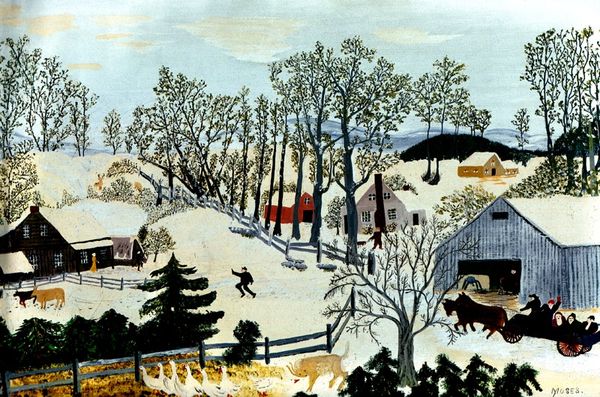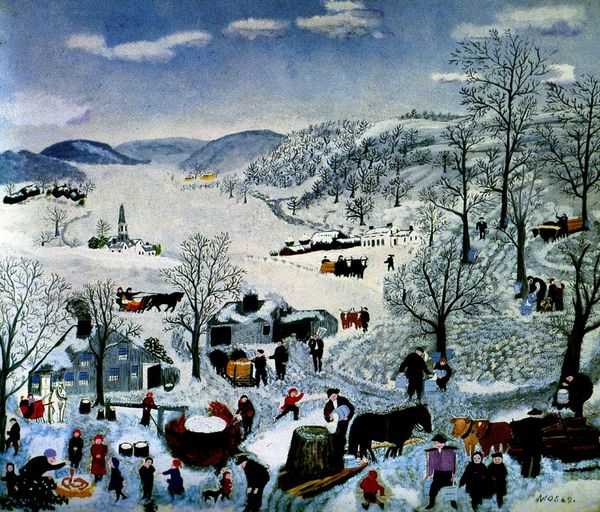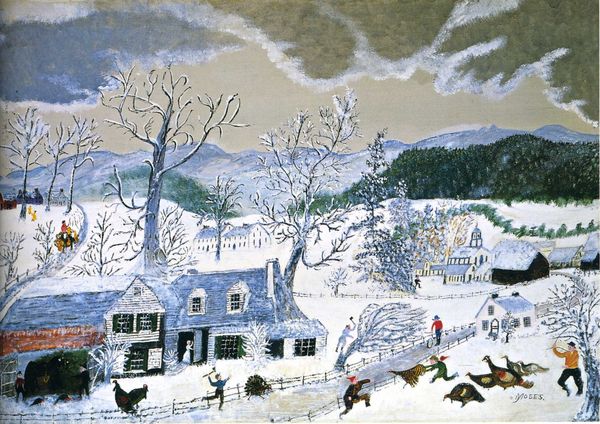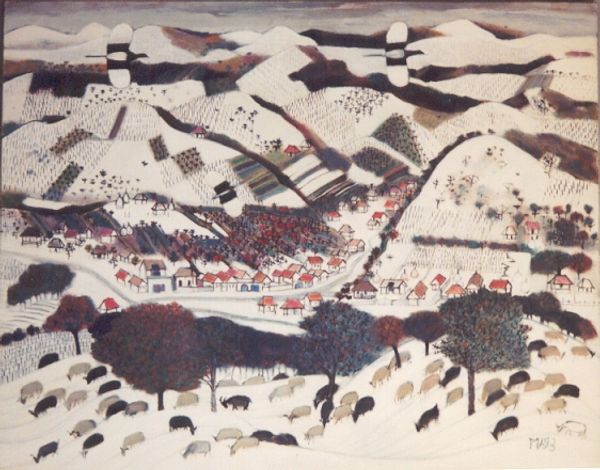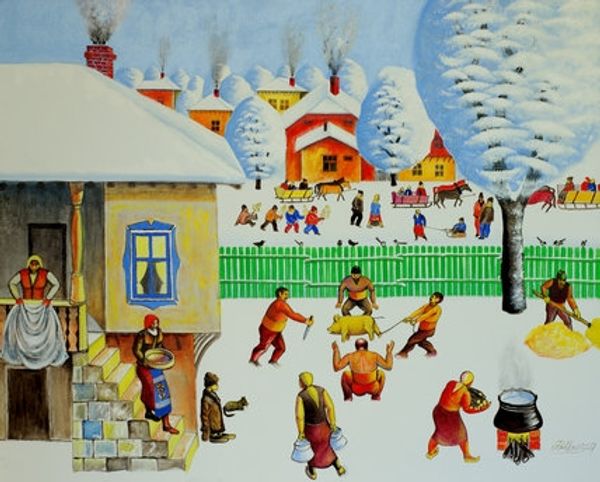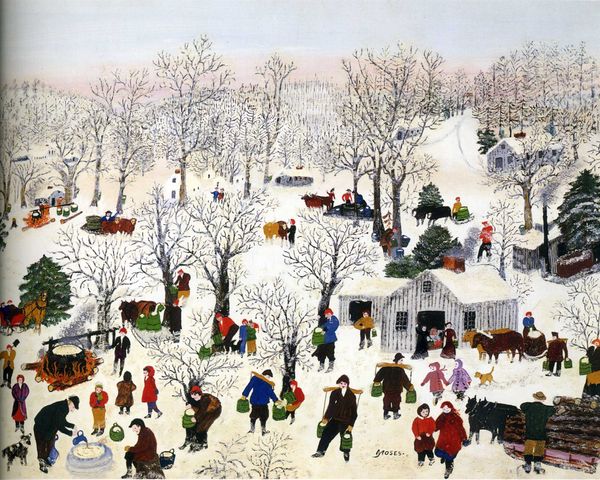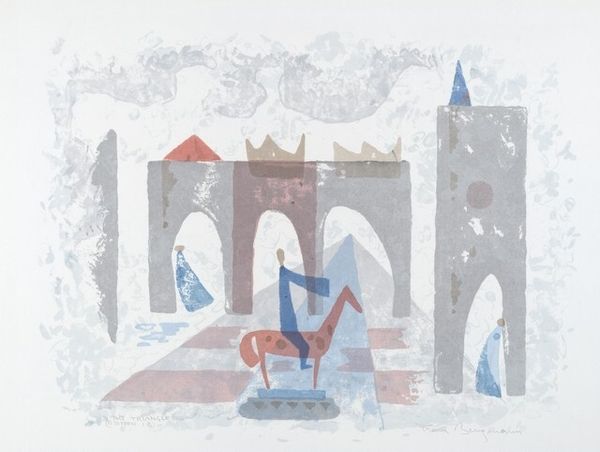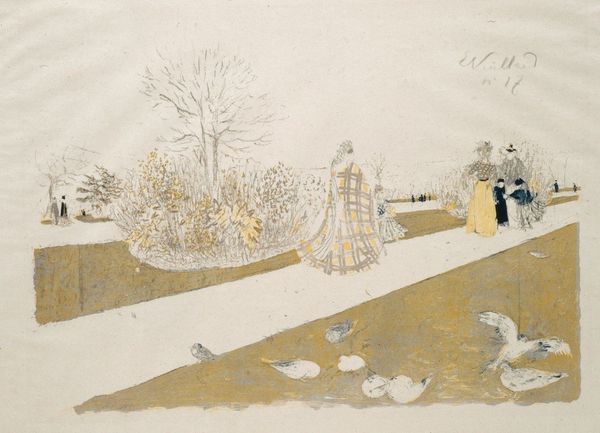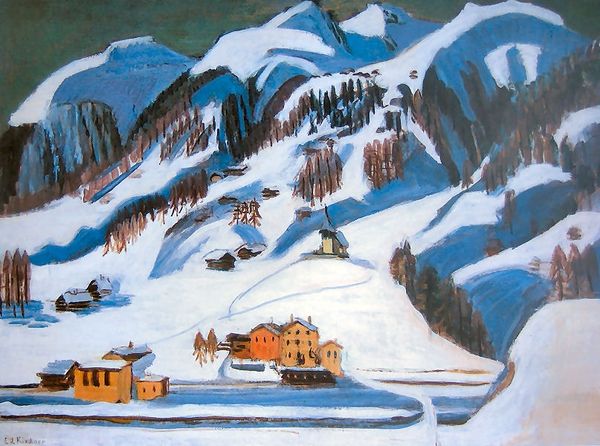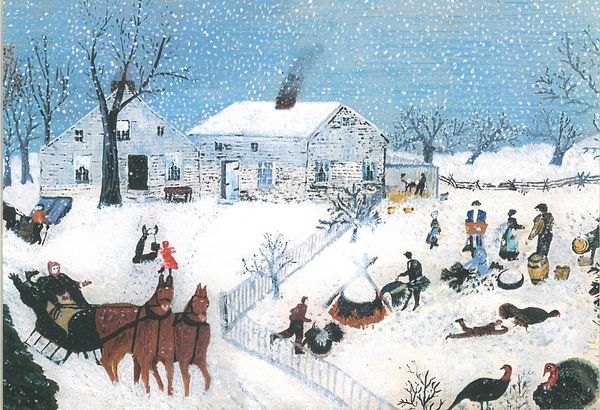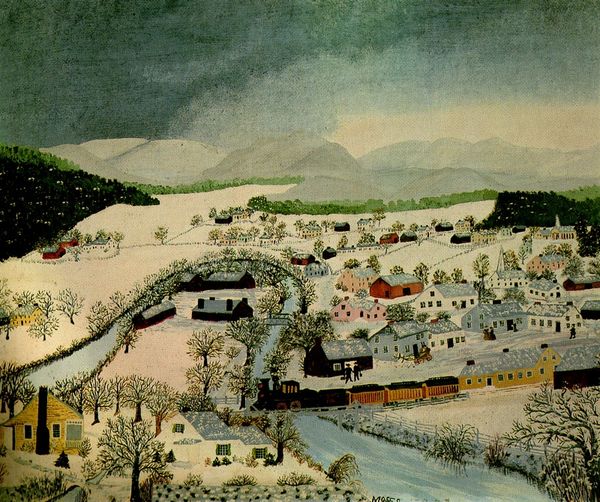
painting, acrylic-paint
#
painting
#
landscape
#
acrylic-paint
#
folk-art
#
naive art
#
genre-painting
#
modernism
#
watercolor
Copyright: Grandma Moses,Fair Use
Curator: Oh, it just makes you want to dive right in, doesn't it? "A Blizzard" by Grandma Moses... painted in 1956 using acrylics. Immediately, it transports you to a snowy village scene. It's playful and charming. What are your initial thoughts? Editor: Playful, yes! It’s a little chaotic, too, like a snow globe that’s just been shaken. All that swirling white, and then these little bursts of color—red scarves, black oxen… It feels kind of raw, you know? Like a memory, or a really good dream. Curator: Indeed. The piece offers a fascinating glimpse into rural life in mid-20th-century America, right? Particularly from a gendered perspective. Moses, born Anna Mary Robertson, had a career emerge in her late 70s. Her work offers insight into her time. This work challenges the canon that privileged male artistic narratives for so long. Editor: Absolutely. It feels very personal, almost autobiographical. There's something so tender about the details - the figures bundled up against the cold. I can almost hear the jingle of the sleigh bells. It is interesting, these snowy paintings often conjure feelings of isolation, but this one evokes a real sense of community and togetherness. Curator: That's perceptive. Community and social connection in rural settings were very real social subjects during this era of shifting demography and industrial transition. The painting acknowledges anxieties of rapid changes to social environments, while simultaneously providing a vision of comfort and community in what appear to be simplified realities. Editor: Simplification doesn’t feel quite right... It almost implies that something’s missing. But for me it amplifies these small vignettes, these personal narratives—that boy running with his sled. Curator: What the work *really* demonstrates, perhaps, is that the so-called 'naivety' of her style gave space for these observations. This space made an active claim about whose lives were considered subjects worthy of painting. She turned ordinary rural existence into narrative. Editor: It's definitely food for thought. Makes me want to pull on my boots and head out into the snow, even if just for a little while. Maybe build a snowman... poorly. Curator: Indeed, there's a warmth that emanates. It also compels me to further research Moses' perspectives on women, rurality and narrative painting within modernism's frameworks.
Comments
No comments
Be the first to comment and join the conversation on the ultimate creative platform.
